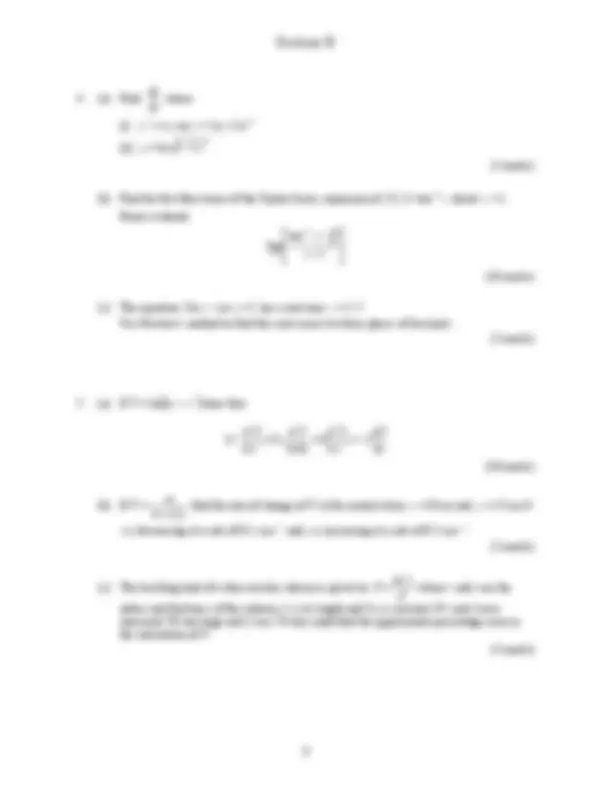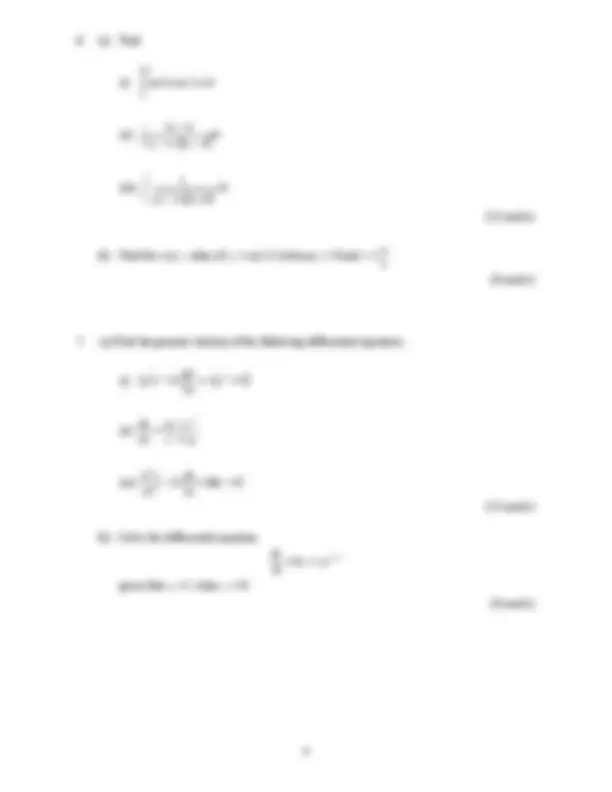




Study with the several resources on Docsity

Earn points by helping other students or get them with a premium plan


Prepare for your exams
Study with the several resources on Docsity

Earn points to download
Earn points by helping other students or get them with a premium plan
Community
Ask the community for help and clear up your study doubts
Discover the best universities in your country according to Docsity users
Free resources
Download our free guides on studying techniques, anxiety management strategies, and thesis advice from Docsity tutors
The instructions and questions for a 3-hour mathematics exam for students in the mechanical engineering program at cork institute of technology. The exam covers topics such as matrix algebra, vector calculus, complex numbers, and calculus. Students are required to answer five questions, two from section a and three from section b.
Typology: Exams
1 / 4

This page cannot be seen from the preview
Don't miss anything!



(NFQ – Level 8)
Answer FIVE questions. Answer TWO
questions from Section A and THREE questions
from Section B. All questions carry equal marks.
Examiners: Mr. G. O’Driscoll
Mr. J. Hegarty
Prof. J. Monaghan
Section A
obtain
A.
Find the scalars α and β such that A A I
(10 marks)
(b) Using Gaussian elimination determine the values of p and q for which the system of
equations
1 2 3
1 2 3
1 2 3
x x px
x x x q
x x x
is inconsistent.
Solve the system when
(i) p = 1 and q =− 1
(ii) p =− 1 and q = 1
(10 marks)
(i) ( 2 A − B ) (. 2 A + B )
(ii) ( 2 A − B ) x( 2 A + B )
(iii) A .[( 2 A − B ) x( 2 A + B )]
(7 marks)
(b) A force F of magnitude 14 N acts at the point (2, 3, 5) in the direction of the line joining
(2, 1, 1) to (4, 7, -2).
Find
(i) the direction cosines of F
(ii) the moment of the force about the point (1, 2, 3)
(7 marks)
(c) Given the vectors a = 3 i − 2 j + 4 k , b = 2 i − 5 j − 4 k and c = i − 8 j − 12 k determine
whether or not
(i) a and b are perpendicular
(ii) a , b and c are coplanar.
Find a vector perpendicular to both a and b.
(6 marks)
(i) z 1 (^) z 2 (ii)
1
z
(iii)
1
4 2
z
z (iv) z 1 (^) − z 2
(7 marks)
(b) Find the modulus and argument of the complex number
( )
j
j z − +
2
.
Use De Moivre’s theorem to find the cube roots of z and express the roots in Cartesian
form.
(8 marks)
(c) Find the locus of z if
(i) z − j = 2 z − 1
(ii) Re ( 2 z + 1 + 3 j ) =Im( z − 2 − 4 j )
(5 marks)
(i)
4
0
sin 4 cos 2
π
x x dx
(ii)
dx x x
x
2
(iii)
2
1
2 10 9
dx
x x
(14 marks)
(b) Find the r.m.s. value of y = cos 2 t between t = 0 and 4
π t =.
(6 marks)
2 2
dy yx
(ii) x xy
xy y
dx
dy
2
2
(iii) 12 36 0 2
2
− + y = dx
dy
dx
d y
(14 marks)
(b) Solve the differential equation
x y xe dx
dy (^) 3 4
−
given that y = 1 when x = 0.
(6 marks)